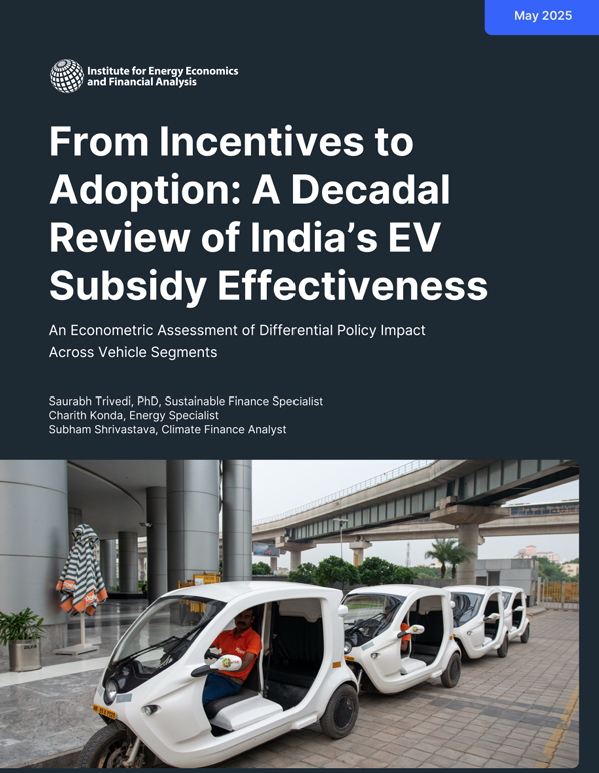India has committed to reducing its GDP emissions intensity by 45% by 2030 and achieving net zero by 2070, with the transportation sector being critical for decarbonization as it accounts for approximately 14% of the country’s energy sector carbon dioxide emissions. To drive this transformation, India has implemented comprehensive electric vehicle (EV) policies including purchase subsidies, production-linked incentives, and regulatory mandates, aiming for ambitious targets of 30% EV sales in private cars, 70% in commercial vehicles, 40% in buses, and 80% in two- and three-wheelers by 2030. This study provides the first comprehensive empirical assessment of India’s EV fiscal support policies across a decade (2014-23), using advanced econometric techniques to evaluate their effectiveness across major vehicle categories. The analysis reveals that while central and state policies have been effective in driving absolute sales growth—particularly for electric two-wheelers with a 12.7% sales increase per standard deviation of subsidy intensity and three-wheelers showing significant multiplier effects—overall market adoption rates remain modest due to barriers like high upfront costs, inadequate charging infrastructure, and consumer preferences for internal combustion engines. The findings indicate that different EV segments have varying maturity levels and policy responsiveness, with some like electric three-wheeler cargo achieving 31% market share primarily through operational cost advantages, while others like electric buses showed limited response to substantial subsidies due to structural market limitations. Future policy success will require moving beyond purchase subsidies to encompass robust charging infrastructure, accessible financing, better central-state coordination, and segment-specific strategies that address unique cost and regulatory bottlenecks for sustainable EV market penetration.
Key Citations

EV two-wheeler sales soared 34x in 4 years, but market share stuck at 4%: Study
